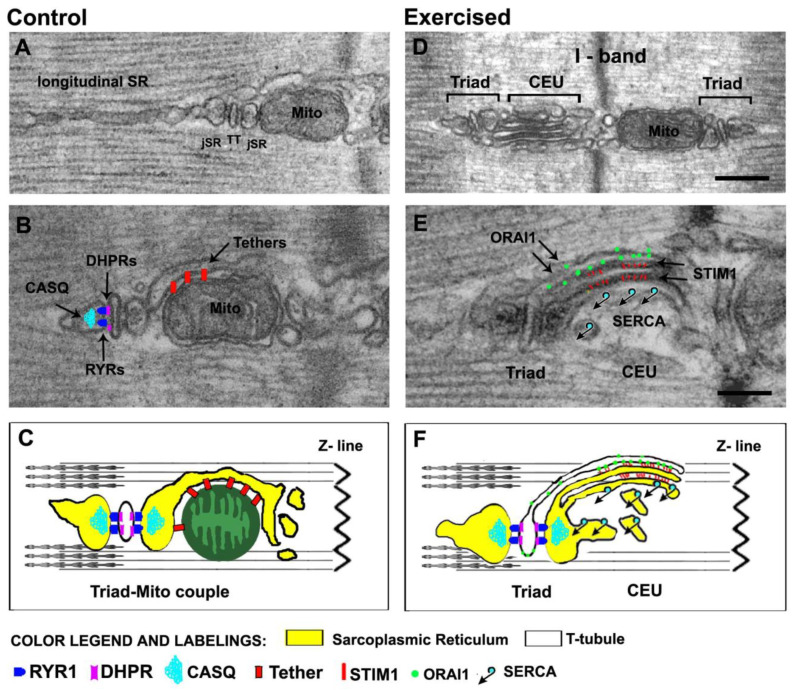Figure 2.
Architecture of the membrane systems and organelles involved in Ca2+ handling and aerobic ATP production. (A–C) In adult mammalian fibers, triads (or CRUs) are placed approximately at the A–I band transition when sarcomeres are relaxed. The SR that does not participate in the formation of junctions with TT constitutes the longitudinal SR, placed either at the A or I band. Triads contain the molecular players of EC coupling (RYRs, DHPRs, and CASQ) shown in panel (B) and are tethered to mitochondria, which are preferentially placed at the I band. In panel C, the cartoon shows a mitochondrion-triad couple. (D–F) Following acute exercise, sarcotubular membranes at the I band (both SR and TTs), are capable of significant remodeling, which eventually leads to the assembly of CEUs. CEUs are formed by SR-stacks, coupled with a TT and contain the molecular players of SOCE (STIM1 and ORAI1) shown in panel (E). In panel (F), the cartoon shows a triad and a CEU, two intracellular junctions which are structurally and molecularly different. Scale bars: (D) 0.2 μm; (E) 0.1 μm.

